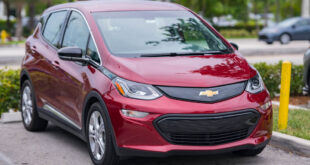Zero-Emission Electric Cars: Revolutionizing Future of Transportation Electric cars with zero emissions have become a hot topic in the automotive industry, promising a sustainable future for transportation. As environmental concerns escalate and global governments tighten emission regulations, zero-emission vehicles (ZEVs) have emerged as a crucial solution. This article delves into what zero-emission electric cars are, how they work, and why they are the future of mobility.
What Are Zero-Emission Electric Cars?
Zero-emission electric cars are vehicles powered solely by electricity, producing no harmful emissions during operation. Unlike traditional internal combustion engine (ICE) vehicles, which rely on fossil fuels, these cars utilize electric motors powered by batteries or hydrogen fuel cells.
Key Features of Zero-Emission Electric Cars
- No Tailpipe Emissions: They do not emit carbon dioxide (CO₂) or other pollutants.
- Energy Efficiency: Electric motors are significantly more efficient than combustion engines.
- Quiet Operation: Electric cars produce minimal noise, enhancing driving comfort.
- Low Maintenance Costs: With fewer moving parts, these vehicles require less upkeep.
How Do Zero-Emission Electric Cars Work?
Battery Electric Vehicles (BEVs)
BEVs operate solely on electricity stored in large battery packs. These batteries are rechargeable using an external power source, such as a home charger or public charging station.
Advantages of BEVs:
- High energy efficiency.
- Renewable energy integration.
Hydrogen Fuel Cell Electric Vehicles (FCEVs)
FCEVs use hydrogen to generate electricity through a chemical reaction in a fuel cell. The only byproduct is water vapor.
Advantages of FCEVs:
- Longer driving range compared to BEVs.
- Faster refueling times.
Why Zero-Emission Electric Cars Are the Future
1. Environmental Benefits
By eliminating tailpipe emissions, these cars contribute to cleaner air and reduced greenhouse gas levels, combating climate change.
2. Economic Growth
The electric vehicle (EV) industry drives innovation and creates jobs in battery production, charging infrastructure, and renewable energy sectors.
3. Government Incentives
Many governments offer tax breaks, rebates, and subsidies for EV buyers, making them more accessible to the public.
Challenges Facing Zero-Emission Electric Cars
- High Initial Cost: EVs often come with a higher upfront price compared to ICE vehicles.
- Limited Charging Infrastructure: Expanding charging networks remains a priority.
- Battery Technology: Developing longer-lasting, more affordable batteries is critical.
Top 10 Tips for Adopting Zero-Emission Electric Cars
- Research available EV models to find the best fit for your needs.
- Explore government incentives and rebates to reduce costs.
- Check local charging infrastructure before purchasing.
- Install a home charging station for convenience.
- Learn about battery maintenance to maximize lifespan.
- Use renewable energy for charging to enhance sustainability.
- Plan road trips around charging station availability.
- Stay informed about advancements in EV technology.
- Join EV communities for tips and support.
- Drive efficiently to maximize battery range.
Top 10 FAQs About Zero-Emission Electric Cars
- What is the range of an average electric car?
Most modern EVs offer a range of 200–400 miles on a single charge. - How long does it take to charge an electric car?
Charging times vary, from 30 minutes at fast chargers to 8–12 hours at home. - Are zero-emission cars expensive to maintain?
Maintenance costs are lower due to fewer moving parts and no oil changes. - Can I charge an EV at home?
Yes, with a Level 2 home charger, you can charge conveniently overnight. - What happens to EV batteries after their lifespan?
Batteries can be recycled or repurposed for energy storage. - Are electric cars really zero emissions?
While they produce no tailpipe emissions, their overall impact depends on how the electricity is generated. - How long do EV batteries last?
Most EV batteries last 8–10 years or more, depending on usage and care. - Are there electric trucks or SUVs available?
Yes, many automakers now offer electric trucks and SUVs. - Is it safe to drive an EV in extreme weather?
Yes, but extreme temperatures can impact battery performance. - Can I tow with an electric car?
Some EVs are designed for towing, but always check the vehicle’s specifications.
Conclusion
Zero-emission electric car are more than just a trend—they represent a paradigm shift in transportation. By prioritizing sustainability, they address pressing environmental concerns and offer economic and technological opportunities. While challenges like infrastructure and costs remain, advancements in technology and supportive policies are paving the way for a greener, cleaner future.
Adopting zero-emission electric cars isn’t just a personal choice; it’s a commitment to global progress. As awareness grows and technology evolves, these vehicles will become increasingly accessible, benefiting both the environment and future generations.
 oto car insurance used car repair
oto car insurance used car repair
